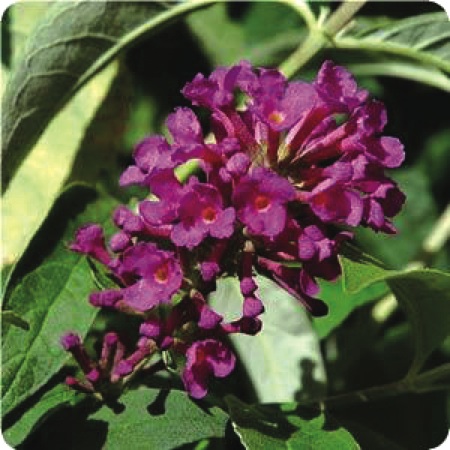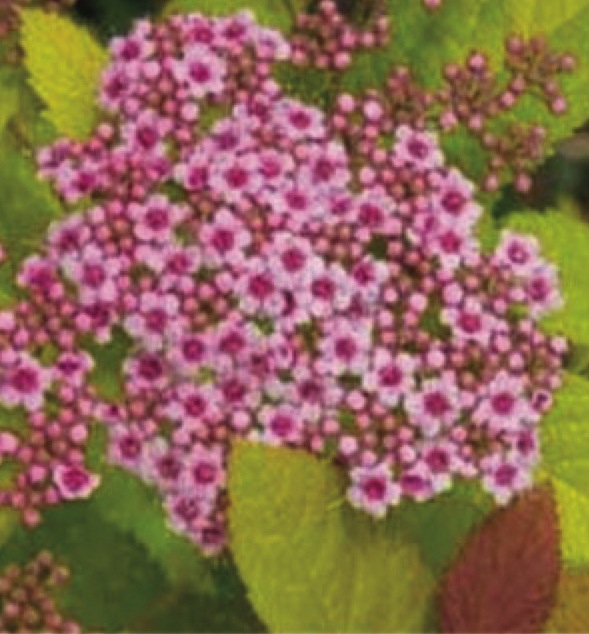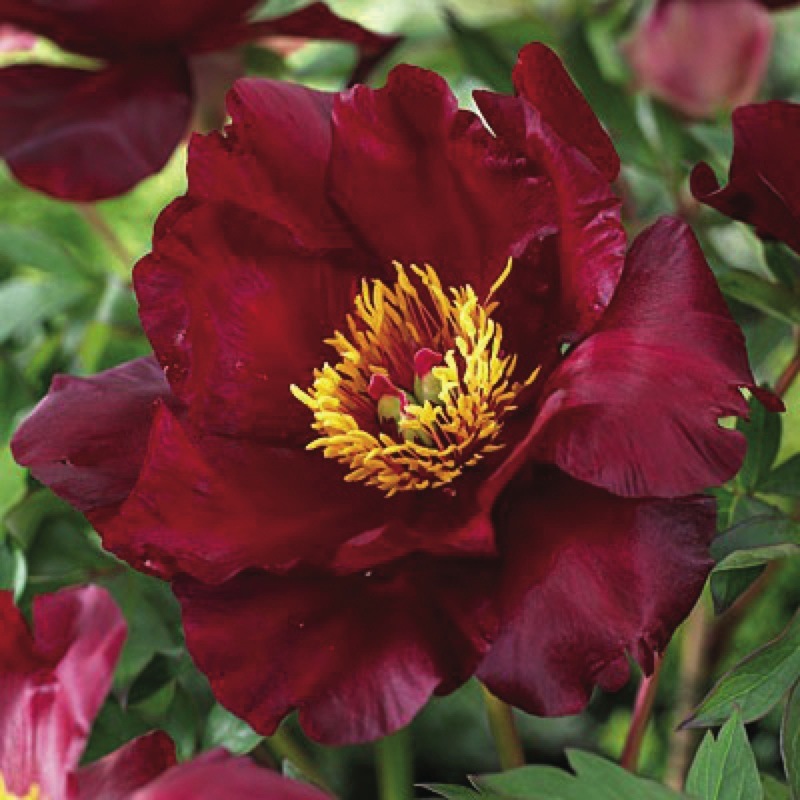This is going to be a good year to try some new plants. By early June, we will have been gardening so long that we will need new plants to break up the routine.
Workers at several southern Maine nurseries have some good options for you to try.
Genevieve Coombs of Roosevelt Trail Garden Center in Windham is excited about some repeat-blooming spirea and some buddleias. The spireas are both part of the Double Play series, which have both blooms and colorful foliage.
” ‘Big Bang’ has some the largest pink flowers I’ve seen on gold foliage, and it is a rebloomer,” she said. “It blooms on new wood so you can cut it back to the ground if you want to.” The Double Play “Gold” spirea has a bright gold foliage all year long.
The two buddleias, or butterfly bush, she likes are in the Flutterby series.
“The larger one at 4 to 5 feet is ‘Tangerine Dream’ with great orange flowers,” she said, “while ‘Tutti Frutti’ is smaller with bright pink flowers.”
Another new buddleia recommended by Tim Bate of Skillins Greenhouse in Falmouth is “Miss Molly.”
“Its claim to fame is its color,” Bate said. “It has really hot red buds opening to bring pink to sangria red flowers. It is a nice compact plant at 5 to 6 feet that blooms all summer long.”
Part of what I like about the “Tutti Frutti” and “Miss Molly” butterfly bushes is that they allude to Little Richard songs that are more than 50 years old.
Kelly Tarbox of Springvale Nurseries thinks “Earlybird Cardinal” daylily is going to be a great addition to the market.
“It is a strong rebloomer and one of the earliest to bloom,” she said. She said it is a great, vibrant red and a little bit larger than the original reblooming daylily, “Stella d’Oro.”
Helene Lewand of Blackrock Farm in Kennebunkport said she really loves selling unusual trees, and that when Michael Dirr — author of the industrial bible of woody plants — visited last year, he was amazed at the number of unusual trees she had.
“We have a katsura tree, cercidipohylum, that has heart-shaped leaves that come out in a pinkish color early in the spring, and it has a bright yellow fall color and it is supposed to, on certain days, smell like cotton candy in the fall.”
She also likes a lot of the more unusual Japanese maples. “Like most gardeners, I know that global warming is real, and I am going to take full advantage of it by pushing the envelope,” Lewand said.
Japanese Sunrise has a striped coral bark color in the winter that is striking, she said, and Autumn Moon has big palmate leaves and a superb fall color.
Becky Moening is excited about a series of hybrid intersectional itoh peonies that Skillins is selling this year.
“Itoh peonies are hybrids of Japanese garden peonies and tree peonies that have the best qualities of both,” she said. “They have the colors of tree peonies and the bud count of garden peonies.”
Moening said they have really large flowers and the yellows that you can’t get in garden peonies. And while the Itoh peonies form their buds underground and die back each year, it is best to cut them back a couple of inches above the ground in the fall.
The varieties that Skillins is selling this year include “Canary Brilliance,” a light yellow; “Bartzella,” a deeper yellow; “Scarlet Heaven,” a red; and “Old Rose Dandy,” a peach color.
“The Itoh peonies produce more blossoms in full sun, but the blossoms last longer in partial shade,” Moening said.
A couple of other perennials she likes are “Little Goldstar” rudbeckia, which is a 14-inch black-eyed Susan with profuse blooms, and “Golden Zebra” heucherella, which has dissected gold leaves with red centers.
Ginny Moody of Moody’s Nursery in Saco said vegetable gardens and fruit trees continue to be big.
“And there is a huge interest in organic gardening,” she said. “I’ve never sold so much compost before.”
Tarbox of Springvale Nurseries agrees with Moody that vegetable gardening continues strong. She’s selling seedlings of products from High Mowing Organic Seed Co. in Vermont.
“We are trying ‘Mountain Princess,’ an early short-season tomato,” she said. “It is a nice mid-size tomato and cold-hardy.”
In addition to expanding its vegetable offerings, Springvale Nurseries is taking advantage of the warmer seasons by offering such products as Elberta peach trees, which could well grow in their area now.
Bate, the woodies specialist at Skillins, also mentioned Physocarpus “Little Devil,’ a dwarf ninebark with a good red color.
“It gets to be 3 to 4 feet tall with ivory pink flowers in June,” he said. “It is very drought-tolerant and hardy to Zone 3, and it is the first compact purple-foliage plant that will fill in the slot that the Japanese barberry plants held.”
Lewand of Blackrock Farm also mentioned Heptacodium as “one of the most wonderful shrubs for a fall display, except for maybe the hydrangeas, with its incredible red fruits and a great color” and Cornus “Heart Throb,” which is “like the Kousa, but it has great bright pink flowers that are just a bit smaller.”
I spent 10 or 15 minutes on the phone with the professionals mentioned above, but I also attended a two-hour presentation at which Jeff O’Donal of O’Donal’s nursery discussed more than 75 new plants. A few stood out.
One is the rhododendron “Florence Parks,” created by the late Joe Parks of New Hampshire, who donated his collection of rhododendrons to the University of Southern Maine. Parks’ goal in hybridization was hardy plants with large blooms, and this plant has lots of 6- to 8-inch trusses.
O’Donal, who played a major role in moving the collection to USM, hopes to offer more Parks rhododendrons in the future.
He is also offering box huckleberry, a native low-growing plant similar to low-bush blueberries. It has white to pinkish flowers followed by edible blue berries and a vibrant red color in the fall.
The “Rhino Hide” hosta, which grows 24 to 30 inches, has the thickest foliage of all hostas, and is resistant to attacks by slugs. “The foliage is cupped and puckered, with a wide blue margin and narrow light-green to yellow center,” he said.
These are just a few of the new plants out there. To get the full flavor, take a trip to your local nursery and check them out on your own.
Tom Atwell has been writing the Maine Gardener column since 2004. He is a freelance writer gardening in Cape Elizabeth, and can be contacted at 767-2297 or at:
tomatwell@me.com
Send questions/comments to the editors.





Success. Please wait for the page to reload. If the page does not reload within 5 seconds, please refresh the page.
Enter your email and password to access comments.
Hi, to comment on stories you must . This profile is in addition to your subscription and website login.
Already have a commenting profile? .
Invalid username/password.
Please check your email to confirm and complete your registration.
Only subscribers are eligible to post comments. Please subscribe or login first for digital access. Here’s why.
Use the form below to reset your password. When you've submitted your account email, we will send an email with a reset code.